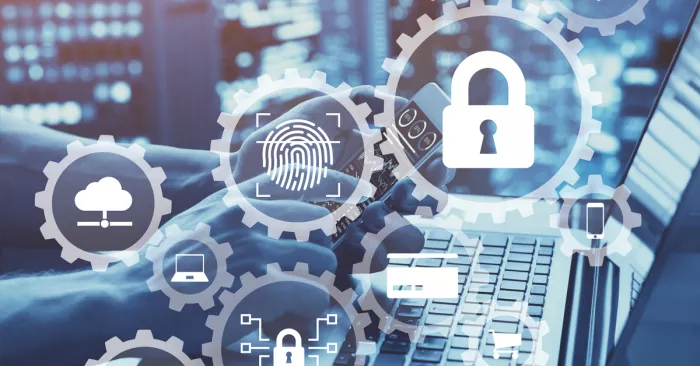Whether you want to collect your customers’ feedback or understand their preferences, using surveys as a research tool is inevitable.
While most surveys collect only information relevant to business operations, some could collect a lot of personal and sensitive information. If the data collected from such surveys is leaked because of inadequate security or protection, all the parties involved can face dire consequences.
Having appropriate security measures in place and following recommended data protection policies while handling the survey data will help you protect its integrity and make informed, data-driven decisions. In this article, we will look at some of the best practices you should follow to secure and protect the data you collect through surveys:
11 Best Practices for Securing Data Collected Through Surveys
It is important to keep in mind that circulating and administering your survey is only the beginning. Right from securing the survey link to backing up the survey responses and handling them diligently, there are several best practices to consider in the process:
#1 Rely on Anonymous Responses
Depending on the nature and purpose of your survey, you may not always need personal data or sensitive information about the participants. If the data you are collecting does not need to be associated with specific individuals or participants, making the survey anonymous is a great way to eliminate risks associated with it.
You can either make the survey completely anonymous right from the start or remove all the identifiers after you have collected the data.
#2 Double-Down on Technical Security Measures

Your ability to secure and safeguard your survey data has a lot to do with the quality and robustness of the security measures you have in place for your IT infrastructure.
Even if you have a single server for managing all your databases, it is important to check whether you have an updated and active anti-virus subscription, intrusion detection systems, firewalls, and other top network security measures to prevent unauthorized access.
Encrypting all the stored and transmitted data in your database and system is necessary to get through security audits and to restore it in case of a loss.
#3 Be Transparent About How You Use the Collected Data
Let’s say you needed to collect a lot of personal information from the participant, your survey forms should at the very least clearly specify the purpose of collecting the data. Being transparent about the purpose and application of the survey, and the efforts required for it, instills trust in the participants and encourages them to respond to all the fields with correct information.
More importantly, if you plan to share any of the information from the survey responses with another party, you must inform the participants about it and ensure they know that responding to the survey implies they are giving consent to share that information. This is a legal requirement in most countries and will go a long way in creating a loyal and reliable database of participants.
#4 Choose a Reliable Survey Tool or Software
Securing your survey data has a lot to do with using the right tools and software for creating and administering the survey. Choosing a reliable and reputable tool, such as SurveyMonkey, SurveyPlanet, or deciding between professional survey tools such as Qualtrics vs Microsoft Forms, can help ensure that your survey is shared and processed on a secure platform.
You must primarily ensure that these survey tools encrypt data, have enhanced authentication mechanisms, let you define access controls, and get regular security patches and updates.
#5 Use SSL Encryption for Your Survey Links
When you want to establish your trust and credibility through surveys, you must first ensure that the survey link you are circulating is secure. Using a secure HTTPS survey link ensures that every entry within the survey is encrypted from the very first moment and throughout filling out the survey.
Once securely recorded, your survey responses must be transferred to an encrypted database, which ideally should be stored on servers you own and have complete control over. You can also implement additional encryption mechanisms to prevent unauthorized control of the responses.
#6 Leverage Proper Access Control and Authentication
Once you have collected the necessary data from your surveys, it is also important that you restrict who can access or alter that data. Remember that if a lot of people have access to that data, its security is likely to get diluted.
Here’s where setting up appropriate access controls will help you take more control. Leveraging access controls and authentication measures can help ensure that your survey data is under a tight lockdown, with authorization limited to very few people.
It is recommended that you limit access to the survey data based on user roles, with the help of strong passwords and multi-factor authentication to implement an additional layer of security.
#7 Limit Collection and Storage of Personal Information
In case you have to collect personal data and information, try to limit those fields as much as possible. For instance, if you only need to know the participant’s age, try to have a field asking directly for the age instead of asking them to enter their date of birth.
Your survey form should be concise and specific, and the questions must align with your business requirements to eliminate data breaches and avoid other compliance and legal risks. Even if you do collect personal or sensitive data, you must store all of it in a safe and secure location.
In case you end up collecting sensitive information, find a way to conceal it when storing it to ensure its safety.
#8 Conduct Periodic Security Audits and Compliance Checks
If you conduct surveys very often, chances are that you have a large volume of data and responses stored on your system. To ensure that your databases are always secure and protected, your IT infrastructure and systems must be audited regularly to prevent any breakdowns and to identify and fix vulnerabilities promptly.
Along with conducting security audits, you must also ensure that your data adheres to the data protection laws of countries where your participants are located. These audits can be quite time-consuming, but they are necessary when you want to set up a robust and secure data environment for your survey responses.
#9 Boost User Awareness About Data Security
It would be incorrect to pin the onus of securing your survey data solely on the security strategies and frameworks implemented in your IT infrastructure. Your survey data security also has much to do with human behavior — yours, your employees, and the participants’. You must educate and train your participants and employees about good computer security practices.
To ensure this happens, you should consider implementing clear security policies and processes. This can be as basic as mandating the creation of strong passwords and setting up multi-factor authentication processes. You can also train them to identify and prevent phishing attempts, and manage access and permissions securely.
#10 Backup all the Survey Responses and Data
Aside from data encryption and security measures, there are some basic things you can do to protect your survey data. This includes taking a comprehensive backup of all your data onto the cloud or external storage. This will help ensure that you have access to a copy of the data in case the original is corrupted or lost.
In some cases, your survey responses may even be considered as an intellectual asset that needs to be stored at multiple secure locations for easy and seamless accessibility.
#11 Deleting Obsolete or Unnecessary Data
While data minimization and concealing sensitive information from being accessed is one way to go, it is always a good idea to store only the essential data, even though extra information has been collected. This aligns with the fact that you can secure personal and sensitive information of your participants better by deleting any data that you are not going to process or use.
Regularly updating your database and deleting obsolete or unnecessary data promptly will help you direct your focus towards securing your essential information.
Why Should You Secure Your Survey Data?
While many countries have stringent data protection laws and regulations that require you to secure your surveys and all the data you collect from their citizens, there are other perks to consider, too:
- Protecting the privacy of the respondents
- Building trust and credibility with the audience
- Securing intellectual property and sensitive information
- Preventing data breaches and unauthorized access
- Enhancing the integrity of the survey data
An unsecured database can damage your credibility and reputation in the long run, and even cause several challenges when you are trying to protect and uphold the quality of your survey data.
Concluding Remarks
Administering surveys is a great way to collect primary data and understand your customers’ preferences and opinions. However, the biggest challenge for companies that want to collect and process crucial survey data is the availability of adequate security measures to protect the database. Following some of the best practices prescribed above can help you navigate the whole process more easily and safeguard your survey data from any malicious attacks or unauthorized access.
Post Comment
Be the first to post comment!





